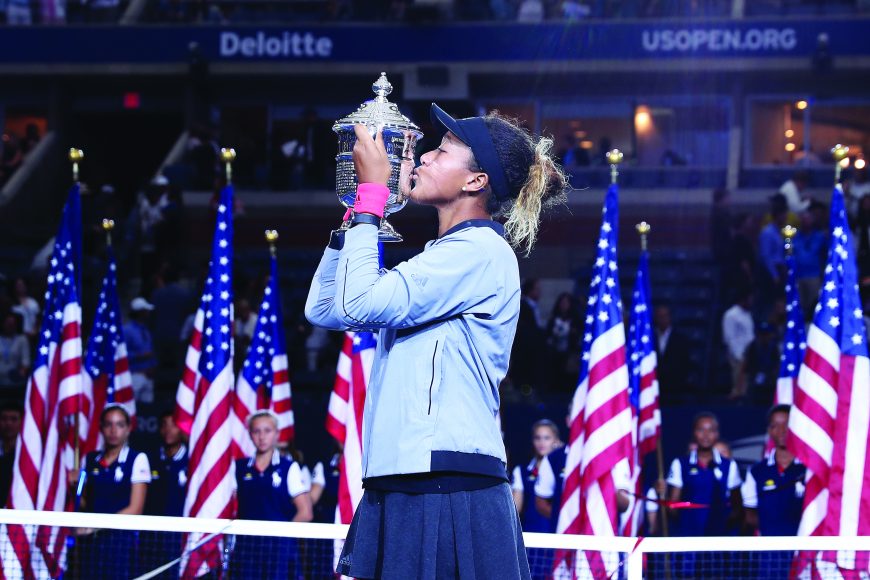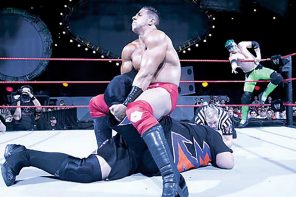Sometimes it’s more intriguing to consider an athletic career in transition than one in ascendance.
At last year’s US Open, Naomi Osaka served notice that she was a star on the rise, displaying grace under pressure — along with an aggressive baseline game and a powerful serve and forehand — as she defeated a fiery, returning Serena Williams to win the Women’s Singles Championship. This past January, Osaka cemented the victory by winning the Australian Open in Melbourne. She garnered the number one ranking in the process, making her the first Asian singles player to do so. (Of Haitian and Japanese descent, Osaka holds Japanese and American citizenship.)
Since then, little has gone right. After the Australian Open, she split from coach Sascha Bajin, an architect of her success, which has left experts like NBC Sports commentator and former world number-one player John McEnroe scratching their heads. She failed to defend her title at Indian Wells, lost early at the Miami Open and was hampered by injuries at the Stuttgart and Italian Opens. She advanced no further than the third round at the French Open — the second of the year’s Grand Slam tournaments, after the Australian Open — then lost in the second round of Birmingham, the tune-up to Wimbledon, the third Slam. The Birmingham loss was significant: With it she dropped to number two in the rankings behind Ashleigh Barty, the eventual winner and newly minted French Open champion.
Wimbledon itself would hold more disaster, with Osaka being upset in the first round.
“It was like watching a different person,” veteran coach and observer — and sometime WAG contributor — Nick Bollettieri wrote on the website of Independent, a British newspaper.
Bollettieri cites Osaka’s backing off from her strong baseline game as the reason for her ills on the court. Off the court?
“I fear it’s a case of too much too soon,” he wrote. “In a very short space of time, Osaka has become a huge superstar, particularly in Japan. I think everything that has happened off the court might just have become too much for her to handle.”
Chris Almeida, writing on the blog theringer.com, agrees: “In a blink, the two majors, the top ranking, the commercials, the swoosh, the photos with LeBron (James). For Osaka, a shy, goofy 21-year-old who Instagrams about watching (manga series) ‘The Prince of Tennis,’ perhaps the newfound global fame has been a little overwhelming.”
Asked about the price of fame at the press conference after her first-round Wimbledon loss, Osaka’s answer said it all while demonstrating the tenderness of youth: “Can I leave? I’m about to cry.”
It’s not just sudden fame that Osaka may be adjusting to but how she has become famous. Osaka didn’t just beat Serena Williams, returning from maternity leave; she beat a Serena Williams in full meltdown mode, whose dispute with umpire Carlos Ramos over whether or not she was receiving coaching from the stands (a no-no) became a cause célèbre in the media for days, including in The New York Times and on “The View.”
“It wasn’t necessarily the happiest memory,” Osaka, known for her wry candor, later said.
After that, she flew to Tokyo for a tournament “and a week of craziness,” as then-coach Bajin put it. The Japanese media and public have always been particularly possessive of their celebrities. But the biracial Osaka’s arrival on the global scene dovetailed with a new openness in what had previously been a strictly homogenous culture. She was born there in Chūō-ku, Osaka, to a Japanese mother, Tamaki Osaka, and a Haitian father, Leonard François, who took her and her older sister, Mari, to live in New York and then Florida so the girls could become tennis stars in the manner of Venus and Serena Williams. Japan’s Nationality Act requires dual citizens to choose a nationality by age 22, which Osaka will turn on Oct. 16. However, few think Japan is interested in forcing her to choose between her Japanese and U.S. citizenship.
Regardless of whether she chooses one or the other, Osaka’s identity as both an Asian and a black woman, a product of both the East and the West, remains. These are difficult divides to bridge in a world that is not always understanding of those who are not either/or but both or many. Sometimes when you try to bridge two worlds, you end up belonging to neither.
It’s a lot to place on youthful shoulders, but if anyone can carry the mantle, it is Osaka. She has demonstrated steady nerves and a stout heart before. And there is no reason, experts say, that she can’t do it again.
As Bollettieri observed in his column, “If I was working with Naomi, I would tell her: ‘This is all part of becoming a top professional, but losses aren’t going to damage your career. You need to stay strong mentally and understand that there are a lot of pressures on your shoulders. Just try to settle back and play your game.”






